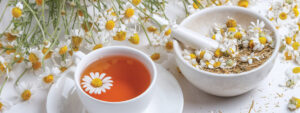
As gardeners, many of us like to relax in the backyard, taking time to enjoy the fruits of our labor and the beautiful flowers. We often though do not think about how easily we could bring those flowers indoors to enjoy in a vase. Many showy flowers, grasses and foliages can be interplanted into your existing garden beds allowing you to harvest throughout the seasons.
Since I am a florist, as well as a gardener, I have a different perspective when choosing plants for my landscape. With each annual, perennial, tree or shrub that I select, I’m thinking about whether I’ll be able to harvest flowers, long-lasting foliage, or an interesting texture, like a seed pod. If I cannot do any of those, then it does not have much place in my cutting garden. Which in my case, is my entire landscape.
The most important thing to consider when choosing a plant for a cut flower landscape is the vase life of the flower. Some flowers simply do not last long once cut from the plant. Daylilies, for example, have a very accurate name. The flower only lasts for a day, making it a poor choice for a cut flower garden. Asiatic or Oriental lily, which are perennial bulbs, on the other hand would have a much longer vase life, and lovely fragrance.
Not sure if it will last? Cut a stem from the garden, place it into a vase of water and see how long it holds up. If it does not last more than four or five days, then it is probably a poor choice as a cut flower.
Listed below is a selection of plant choices for a long season of cut flower enjoyment in Illinois. These annuals, perennials, bulbs, grasses and shrubs will be easy to grow and the vase life of the flowers will be at least a week in most cases.
Annuals
Annuals may be easily started from seed indoors to create transplants or may be direct-seeded right into the garden. Easy to grow examples include zinnias, strawflower, celosia, gomphrena, amaranth, cosmos, black eyed susan, and sunflowers.
Bulbs
Both spring flowering bulbs, which are perennials and planted in the fall, and summer bulbs, which are planted in the spring and dug up at the end of the season, make great additions to an existing garden bed that needs a bit of color. Spring flowering bulbs like tulips and daffodils are both long lasting cut flowers. Dahlias and gladiolus are beautiful summer bulbs that are worth the effort of digging up at the end of each season.
Perennials
Stagger out your flowering times when selecting your perennials to have flowers always available for cutting. Hellebores, bleeding heart, peonies, iris, liatris, purple coneflower, eryngium, poppies, astilbe, clematis, yarrow, and sedum are reliable options.
Foliage Plants, Grasses, and Shrubs
These plants may not have showy flowers, but they add a unique texture to your garden arrangements. Plant lamb’s ear, dusty miller, scented geranium, hosta, Solomon’s seal, coral bells, miscanthus, Northern sea oats, beautyberry, smokebush, spirea, Japanese pieris and ninebark to have a ready supply of foliage and textural elements to add to your vase.
When and How to Harvest
The best time to cut flowers from the garden is in the morning, before the dew has evaporated, or in the early evening, when the plants have ample sugars stored up. When cutting flowers, be sure to get your stems into water with a floral preservative as soon as possible. Floral preservative packets can be found at your local florist or homemade preservative solutions can work, as long as they contain some mixture of sugars, acidifiers, and bactericides.
Remove any foliage from the stems that will be under water, and place your vase in a cool location, away from direct sunlight or drafts. Change your water every other day, adding new floral preservative each time, and this will ensure a long vase life for your beautiful garden arrangement. Grab any container that holds water and get to cutting!









